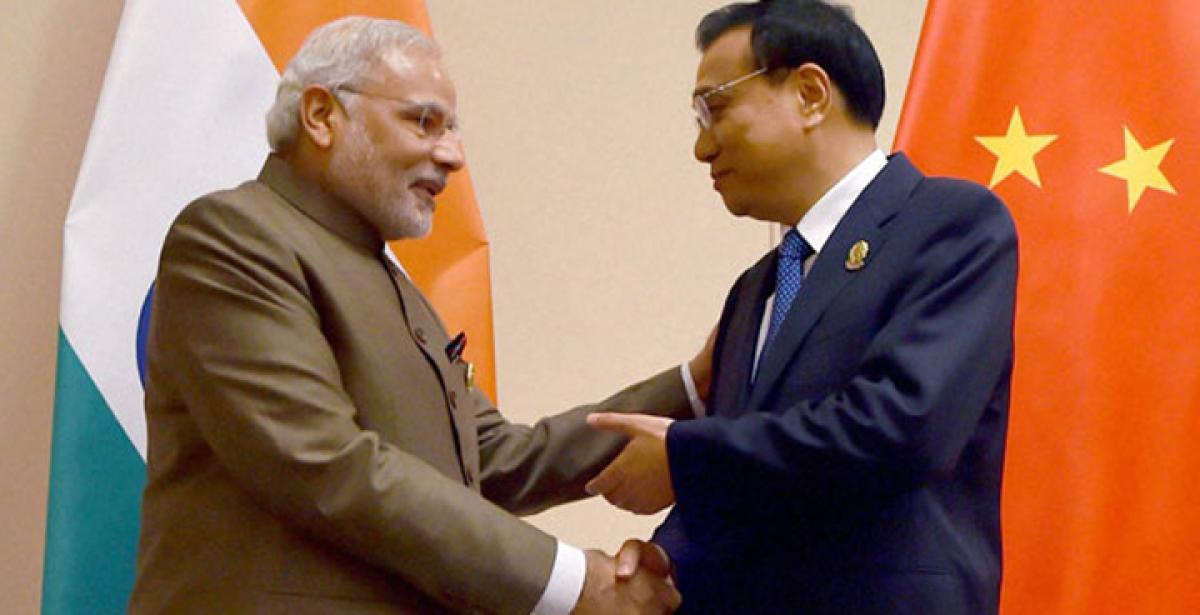Live
- Chanchalguda Jail Officials Say They Haven't Received Bail Papers Yet, Allu Arjun May Stay in Jail Tonight
- BJP leaders present evidence of illegal voters in Delhi, urge EC for swift action
- Exams will not be cancelled: BPSC chairman
- Nagesh Trophy: Karnataka, T.N win in Group A; Bihar, Rajasthan triumph in Group B
- YS Jagan condemns the arrest of Allu Arjun
- Economic and digital corridors to maritime connectivity, India and Italy building vision for future, says Italian Ambassador
- SMAT 2024: Patidar's heroics guide Madhya Pradesh to final after 13 years
- CCPA issues notices to 17 entities for violating direct selling rules
- Mamata expresses satisfaction over speedy conviction in minor girl rape-murder case
- Transparent Survey Process for Indiramma Housing Scheme Directed by District Collector
Just In

x
Highlights
As I write this, I spot over a dozen Chinese men outside my Beijing hotel room wearing air purifier masks on their faces - the price they paid for technology. It stirred some alarming thoughts about where India is heading, and why India has a need to rethink each of its steps towards technological advancement.
As I write this, I spot over a dozen Chinese men outside my Beijing hotel room wearing air purifier masks on their faces - the price they paid for technology. It stirred some alarming thoughts about where India is heading, and why India has a need to rethink each of its steps towards technological advancement.
.jpg)
In this world of homogenization, all metros seem the same, Berlin to Beijing - glittering malls, tall building, fast food and speedy cars.
Beijing was also no different from Delhi except for Mandarin on its billboards and it gave the look of what Delhi could be few years ahead -- high speed metros, better looking cars, better looking buildings, cleaner and orderly streets, but men much petite.
As high as my expectations were, from a country pioneering in technology, to be battling its pollution levels and other effects of technology, the country seemed to have lost equally bad in its struggle.
Living in Delhi, pollution was something which I could see around, but Beijing also got me to experience it. As soon as I stepped out of the airport, my nostrils were flaring up, being an asthma fighter, immediately finding it difficult to breathe. Although there have been attempts from the Chinese government -- denying registrations to older cars and factories -- to fight their pollution monster, the issue seems to be not all that simple to settle the fight.
Some of China's pollution fighting technologies earlier, which ran on coal-generated electricity, thereby contributed to higher carbon emissions although air quality would get better - a technology to fight another technology.
Result was the sight of a huge population - young to old - donning air purifiers, attempting to breathe cleaner air. Although these air purifiers could filter particulate contaminants in the air there is no evidence that these filters could help in long-term.
According to the US Department of State Air Quality Monitoring Program's 'Mission China', the air quality index for Beijing on any average 24 hours of a day shows "unhealthy for sensitive groups" - nearly as unhealthy as smoking 40 cigarettes a day, as per a study.
The classic Tiananmen Square and the Forbidden City shots at night that I sought as a tourist were rather hazy owing to the smog and were tough to crack them right.
The average PM2.5 levels figured between 101-150, as against the safe 0-50 level, and even touched the '"unhealthy" level (151-200) at night. These levels, according to the department, means "active children and adults, and people with respiratory disease, such as asthma, should limit prolonged outdoor exertion"
India, which is still on its road to technological advancement, aims at replicating the Chinese ways, be it "Make in India", be it attracting Foreign Direct Investments (FDI) for its industries and businesses. But its capital city Delhi's air pollution already has touched "hazardous" levels.
As per the Delhi Pollution Control Committee, the PM2.5 levels in Delhi's air are always above the prescribed safe levels of 60 with an average of 100 units of particulate matter pollution in the air, reaching levels as high as 300 during winters. Delhi has bagged the spot of its competitor Beijing, which was considered to be the most polluted city for long.
According to a World Health Organization study last year the concentration of PM2.5 was higher in Delhi than in Beijing, proving Delhi to have the filthiest air in the world.
Shouldn't these be indicators for India to rethink technology, industries?
Beijing has now assumed its path of green energy, and shut some of its conventional coal-run industries, electricity out of coal to adopt gas-run methods and other non-conventional methods and has improved its air quality much better than before.
It was a much needed move for Beijing, to have cleaner means of transportation. A simple move to have "only bicycle" track has helped Beijing a lot - persuading many to use their bicycles or electric bikes. On a majority of the days, there were more bicycles than there would be cars on the road, a solution Delhi needs.
Whereas studies on Delhi have been bringing out even horrific angles to the city's pollution. The most recent study by University of Surrey shows that Delhi's air has a "toxic blend" of geography, poor energy resources and unfavourable weather that dangerously "boosts" its pollution.
Delhi, I hope you're listening.

Next Story
More Stories
ADVERTISEMENT
© 2024 Hyderabad Media House Limited/The Hans India. All rights reserved. Powered by hocalwire.com







